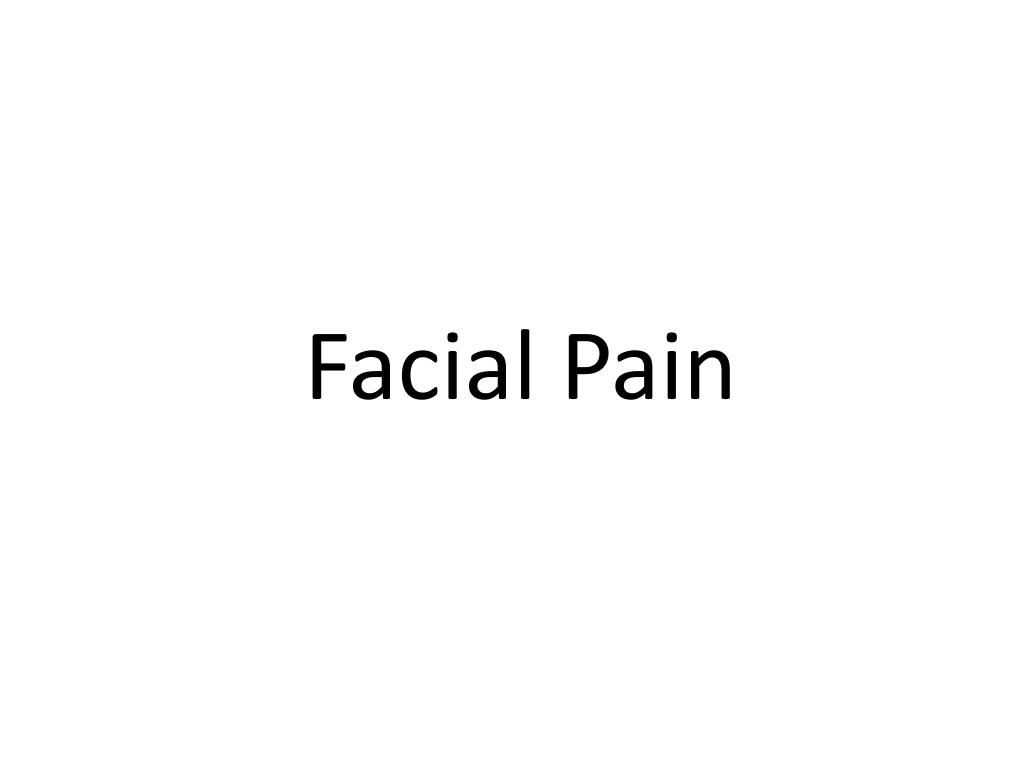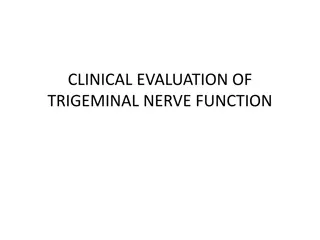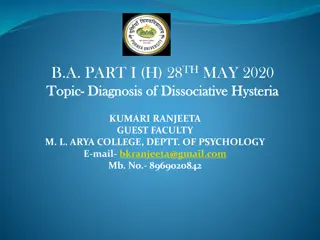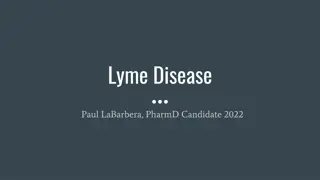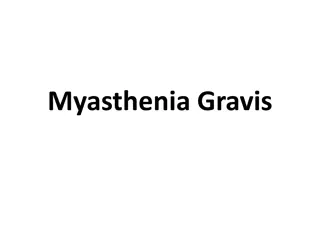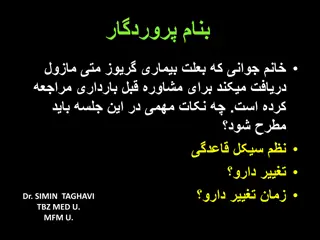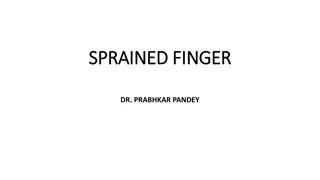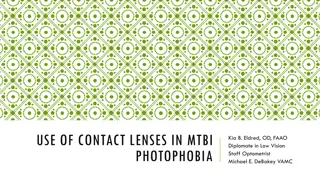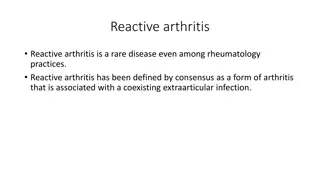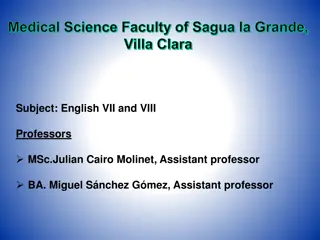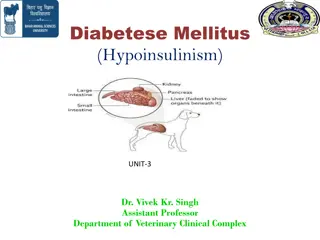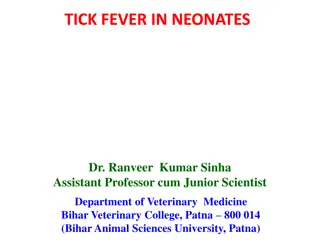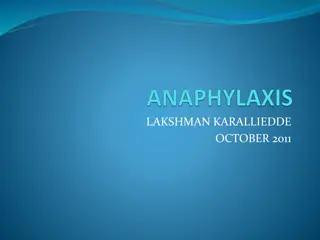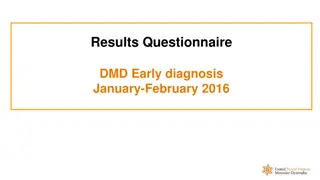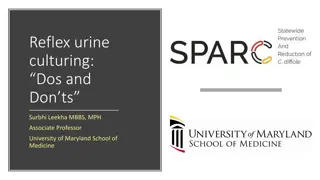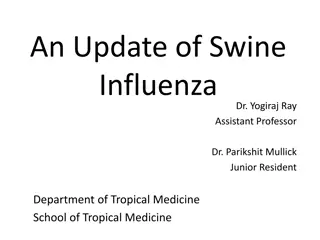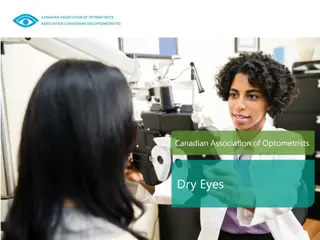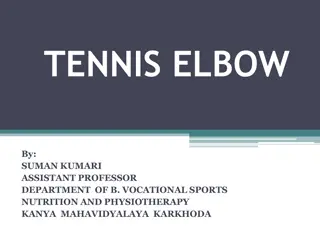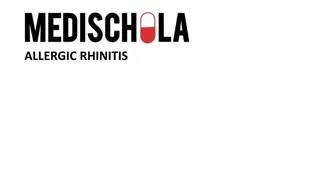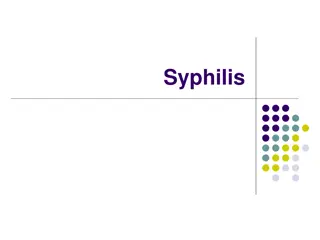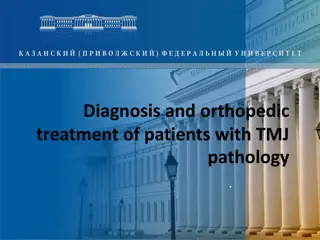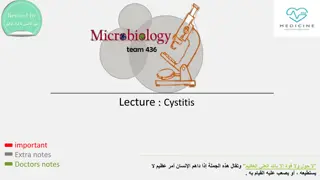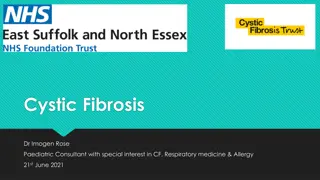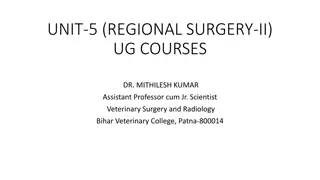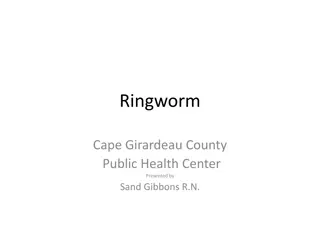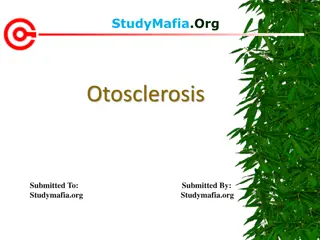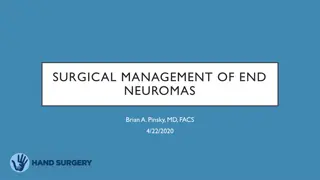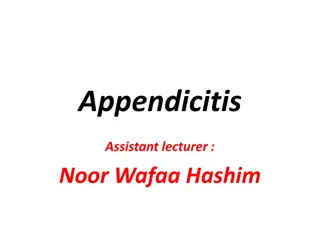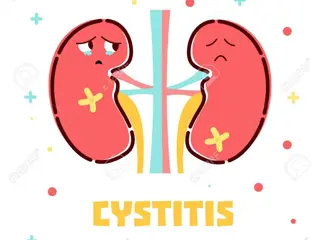Understanding Trigeminal Neuralgia: Symptoms, Diagnosis, and Treatment Options
Trigeminal neuralgia, also known as "tic douloureux," is characterized by sudden, sharp facial pain that can be triggered by various factors. It predominantly affects middle-aged and elderly women. Diagnosis involves recognizing distinct pain patterns and ruling out other causes of facial pain. Treatment options include drug therapy with carbamazepine, phenytoin, baclofen, or lamotrigine, as well as alternative procedures like alcohol injection, rhizotomy, or posterior fossa exploration for structural causes. Radiofrequency rhizotomy or gamma radiosurgery are additional options, especially for elderly patients. Timely intervention can provide relief from this debilitating condition.
Download Presentation

Please find below an Image/Link to download the presentation.
The content on the website is provided AS IS for your information and personal use only. It may not be sold, licensed, or shared on other websites without obtaining consent from the author. Download presentation by click this link. If you encounter any issues during the download, it is possible that the publisher has removed the file from their server.
E N D
Presentation Transcript
Trigeminal neuralgia ("tic douloureux") is most common in middle and later life. It affects women more frequently than men.
Clinical Findings Momentary episodes of sudden lancinating facial pain, commonly arise near one side of the mouth and shoot toward the ear, eye, or nostril on that side. The pain seldom lasts more than a few seconds or a minute but tend to recur frequently, both day and night, for several weeks at a time The pain may be triggered or precipitated by such factors as touch, movement, and eating. Another characteristic feature is the presence of trigger zones, typically on the face, lips, or tongue, that provoke attacks. Spontaneous remissions for several months or longer may occur. As the disorder progresses, however, the episodes of pain become more frequent, remissions become shorter and less common, and a dull ache may persist between the episodes of stabbing pain.
Differential Diagnosis The characteristic features of the pain in trigeminal neuralgia usually distinguish it from other causes of facial pain. Neurologic examination shows no abnormality except in a few patients in whom trigeminal neuralgia is symptomatic of some underlying lesion, such as multiple sclerosis or a brainstem neoplasm, in which case the finding will depend on the nature and site of the lesion. Similarly, CT scans and radiologic contrast studies are often normal in patients with classic trigeminal neuralgia. In a young patient presenting with trigeminal neuralgia, multiple sclerosis must be suspected even if there are no other neurologic signs.
Treatment Drug therapy with carbamazepine is effective in ~50 75% of patients. If this medication is ineffective or cannot be tolerated, phenytoin300 400 mg daily should be tried. Baclofen (10 20 mg three or four times daily) or lamotrigine (400 mg orally daily) may also be helpful, either alone or in combination with one of these other agents. Gabapentin may also relieve pain, especially in patients who do not respond to conventional medical therapy and those with multiple sclerosis.
In the past, alcohol injection of the affected nerve or rhizotomy, was recommended if pharmacologic treatment was unsuccessful. More recently, however, posterior fossa exploration has frequently revealed some structural cause for the neuralgia (despite normal findings on CT scans, MRI, or arteriograms), such as an anomalous artery or vein impinging on the trigeminal nerve root. In such cases, simple decompression and separation of the anomalous vessel from the nerve root produce lasting relief of symptoms. In elderly patients with a limited life expectancy, radiofrequency rhizotomy is sometimes preferred because it is easy to perform, has few complications, and provides symptomatic relief for a period of time. Gamma radiosurgery to the trigeminal root is another noninvasive approach that appears to be successful in 80% of patients, with essentially no side effects other than facial paresthesias in a few instances. Surgical exploration generally reveals no abnormality and is inappropriate in patients with trigeminal neuralgia due to multiple sclerosis.
Atypical Facial Pain is generally a constant, often burning pain that may have a restricted distribution at its onset but soon spreads to the rest of the face on the affected side and sometimes involves the other side, the neck, or the back of the head as well. The disorder is especially common in middle-aged women, many of them depressed, but it is not clear whether depression is the cause of or a reaction to the pain. Simple analgesics should be given a trial, as should tricyclic antidepressants, carbamazepine, oxcarbazepine, and phenytoin; the response is often disappointing. Opioid analgesics pose a danger of addiction in patients with this disorder. Attempts at surgical treatment are not indicated.
Glossopharyngeal Neuralgia Glossopharyngeal neuralgia is an uncommon disorder in which pain similar in quality to that in trigeminal neuralgia occurs in the throat, about the tonsillar fossa, and sometimes deep in the ear and at the back of the tongue. The pain may be precipitated by swallowing, chewing, talking, or yawning and is sometimes accompanied by syncope. In most instances, no underlying structural abnormality is present; multiple sclerosis is sometimes responsible. Oxcarbazepine and carbamazepine are the treatments of choice and should be tried before any surgical procedures are considered.
Postherpetic Neuralgia Herpes zoster (shingles) is due to infection of the nervous system by varicella-zoster virus. About 15% of patients who develop shingles suffer from postherpetic neuralgia. This complication seems especially likely to occur in the elderly, when the rash is severe, and when the first division of the trigeminal nerve is affected. It also relates to the duration of the rash before medical consultation. A history of shingles and the presence of cutaneous scarring resulting from shingles aid in the diagnosis.
Prevention The incidence of postherpetic neuralgia may be reduced by the treatment of shingles with oral acyclovir or famciclovir, systemic corticosteroids do not help. Zoster vaccine markedly reduces morbidity from herpes zoster and postherpetic neuralgia among older adults.
treatment Management of the established complication is essentially medical. If simple analgesics fail to help, a trial of a tricyclic antidepressant (eg, amitriptyline) in conjunction with a phenothiazine (eg, perphenazine, 2 8 mg/d) is often effective. Other patients respond to carbamazepine (up to 1200 mg/d), phenytoin (300 mg/d), or gabapentin (up to 3600 mg/d).
A combination of gabapentin and morphine taken orally may provide better analgesia at lower doses of each agent than either taken alone. Topical application of capsaicin cream is sometimes helpful, perhaps because of depletion of pain-mediating peptides from peripheral sensory neurons, and topical lidocaine (5%) is also worthy of trial.
Facial Pain Due to Other Causes Facial pain may be caused by temporomandibular joint dysfunction in patients with malocclusion, abnormal bite, or faulty dentures. There may be tenderness of the masticatory muscles, and an association between pain onset and jaw movement is sometimes noted. This pattern differs from that of jaw (masticatory) claudication, a symptom of giant cell arteritis, in which pain develops progressively with mastication. Treatment of the underlying joint dysfunction relieves symptoms.
A relationship of facial pain to chewing or temperature changes may suggest a dental disturbance. Sinusitis and ear infections causing facial pain are usually recognized by the history of respiratory tract infection, fever, and, in some instances, aural discharge. There may be localized tenderness. Radiologic evidence of sinus infection or mastoiditis is confirmatory. Glaucoma is an important ocular cause of facial pain, usually localized to the periorbital region. On occasion, pain in the jaw may be the principal manifestation of angina pectoris. Precipitation by exertion and radiation to more typical areas establish the cardiac origin.
